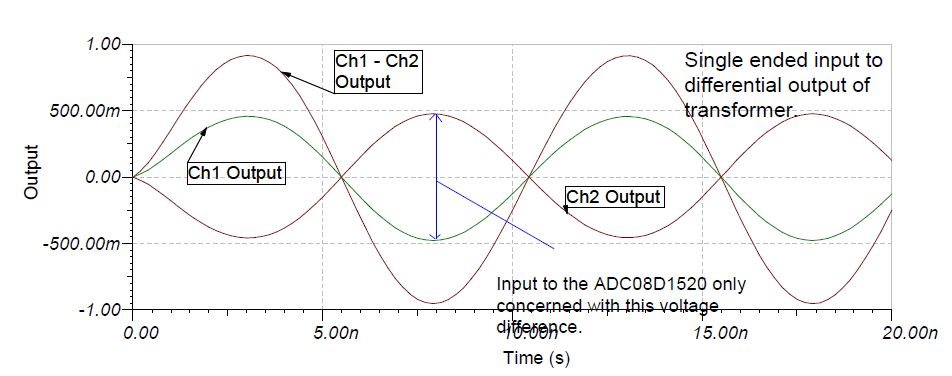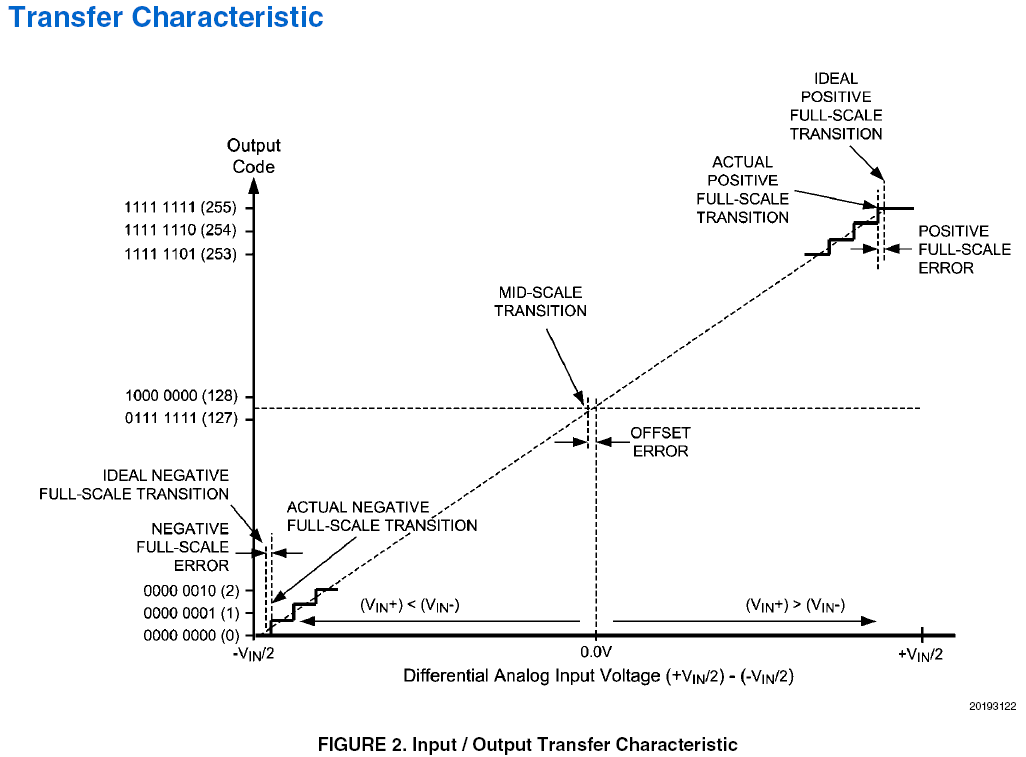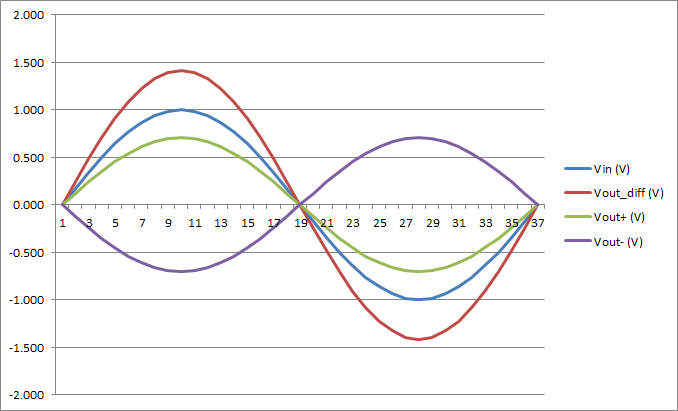Hello,
A customer has the following question about what specifically does the ADC08D1520 input pins measure when it is provided with a differential input.
"I would like to be sure the input voltage is within the ADC signal input dynamic range. As such, I want to be certain what the ADC input is measuring."
To illustrate this point, they made a SPICE simulation using a generic transformer to produce a different output from a single-ended input.
Their understanding is that the ADC is measuring the potential difference between the two signals, and want to be sure that such a measurement can be used in order to ensure that the differential voltage is within the ~560 mV or ~ 840 mV limit of the part.
They also have Ch1 - Ch2 on the SPICE simulation, but the understanding is that this measurement is not performed by the ADC. Is that correct?
Is the input of the ADC08D1520 only concerned with the voltage differential illustrated below?
SPICE Simulation Waveform:
SPICE Model:






